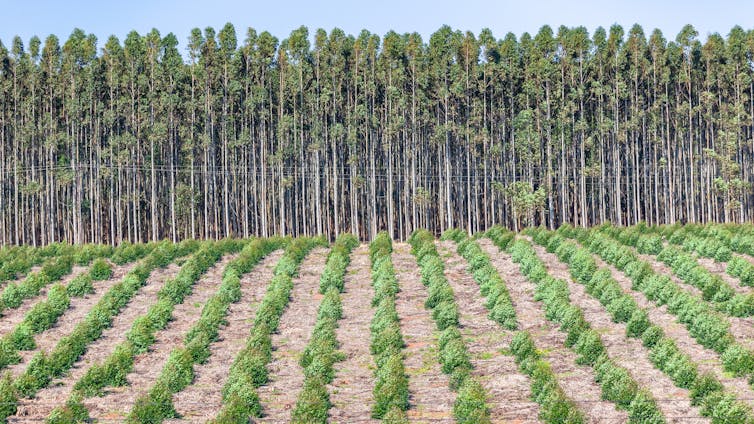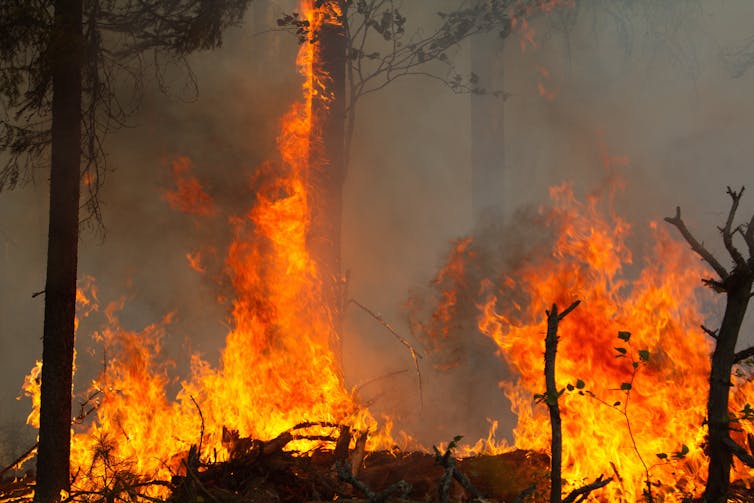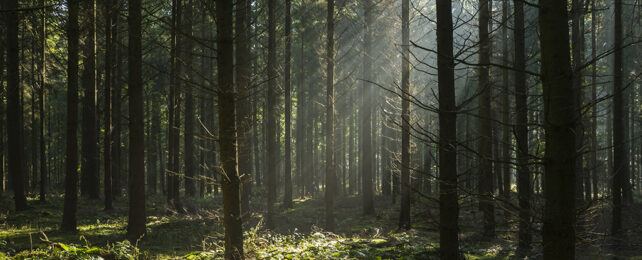In 2015, research on global forest cover revealed a concerning fact: 70 percent of the world's remaining forest now lies within 1 kilometer of the forest's edge. This process, called fragmentation, is causing the deepest and darkest parts of the world's forests to shrink.
Forest fragmentation is bad news for many unique animal and plant species that rely on these forests for their survival. It also reduces the forest's ability to capture and store carbon, which is an important part of tackling climate change.
Researchers from Fudan University in China recently conducted a study that mapped changes in global forest fragmentation between 2000 and 2020. Their results show that the most biodiverse forests on the planet – those found in the tropics – continue to suffer increasing fragmentation, mainly due to clearance for agriculture.
However, the picture is different in certain boreal, temperate, and sub-tropical regions. In particular, patches of forest in western Canada, western and far-eastern Russia, and central and southern China seem to be coming together.
Less fragmentation should, in theory, benefit forest biodiversity and increase carbon removal. But the outcome ultimately depends on the type of forests that are regrowing or being planted. It's unclear from the study whether the regrowth consists of single-species plantations for timber or bioenergy, or if it's natural regeneration.
However, a different study in 2022 shed some light on the situation. It highlighted the presence of large areas of planted forest in temperate and boreal regions, alongside natural regenerated forests with signs of human management such as logging.
These forests host very different biodiversity to natural, old-growth forests, and are less effective at storing carbon.

Chris Van Lennep Photo/Shutterstock
Measuring a forest
The new study classifies forests only by tree cover – defined as a 30- by 30-metre pixel on a satellite image, where more than 50 percent of the pixel area is covered with trees that are over 5 meters tall. This is a common way to identify forests but has a limitation: it doesn't distinguish between different forest types.
In the tropics, for example, this analysis would treat an intact rainforest and a mature Hevea brasiliensis rubber tree plantation as the same thing. But they have different biodiversity, ecosystem functions, and capacity for carbon drawdown and storage.
Rubber tree plantations, for example, support far fewer (and different) plant and animal species than natural tropical forests. In fact, a study conducted in the Mekong region of south-east Asia found that, in most cases, monoculture rubber plantations harbor less than half the plant- and animal-species richness of natural forest.
Capturing the cyclical patterns of forest clearance and planting in such an analysis is also difficult. Demand for timber and wood for biofuel is increasing, so there might have been recent growth in tree planting, and now these trees could be reaching maturity.
However, this growth is part of a cyclical felling process, so it may not indicate a long-term trend. As these plantations mature, forests may once again become fragmented.
Why are forests being lost or gained?
Understanding the reasons behind forest loss or gain is also challenging. The Fudan University study found that wildfires were linked to increased forest fragmentation in both the southern Amazon and central Siberia. But the reasons for these fires are probably very different and can often be complicated.
In central Siberia, unusually high temperatures have led to forest fires in recent years. Some of these fires may start in agricultural areas, but there are also underground peat fires (known as "zombie fires") that smolder throughout winter and reignite the surface during periods of drought. These fires do not represent intentional forest clearance by people.
On the other hand, fires are used deliberately as a tool to clear land for agriculture in the southern Amazon. These fires can also become worse during drought conditions.
Forest gains may result from changes in land management practices that do not necessarily represent natural forest regrowth. Switching from traditional, shifting cultivation (a form of agriculture where plots of land are cultivated temporarily before being abandoned to recover) to permanent tree cover crops, as seen with rubber in south-east Asia, would show up as decreased fragmentation.
And yet, it also signifies a decline in natural forest cover because areas are no longer being left to regrow naturally. This could lead to a decrease in biodiversity and possible hydrological consequences.

ressormat/Shutterstock
Large tracts of forests are important
What's clear is that large "intact" forest landscapes need to be protected. Forests create their own microclimates, with depths of shade, humidity and specific soils. These microclimates are significantly altered at the edges of forests.
In intact forests, animals can move over large distances without having to leave the habitat they depend upon. Similarly, plants, insects and amphibians that rely on specific forest microclimates can find new areas to establish and grow within the forest ecosystem.
Many animal and plant species can only thrive in these deep forests. The Mendolong bubble-nest frog, for example, inhabits a single mountain in Borneo and has never been found in a disturbed forest. Keeping tropical forests intact and unfragmented is critical for species such as this.
We need to keep a close eye on where we are losing and gaining forests – both for the sake of biodiversity and the climate.![]()
Eleanor Warren-Thomas, Lecturer in Conservation and Forestry, Bangor University
This article is republished from The Conversation under a Creative Commons license. Read the original article.
